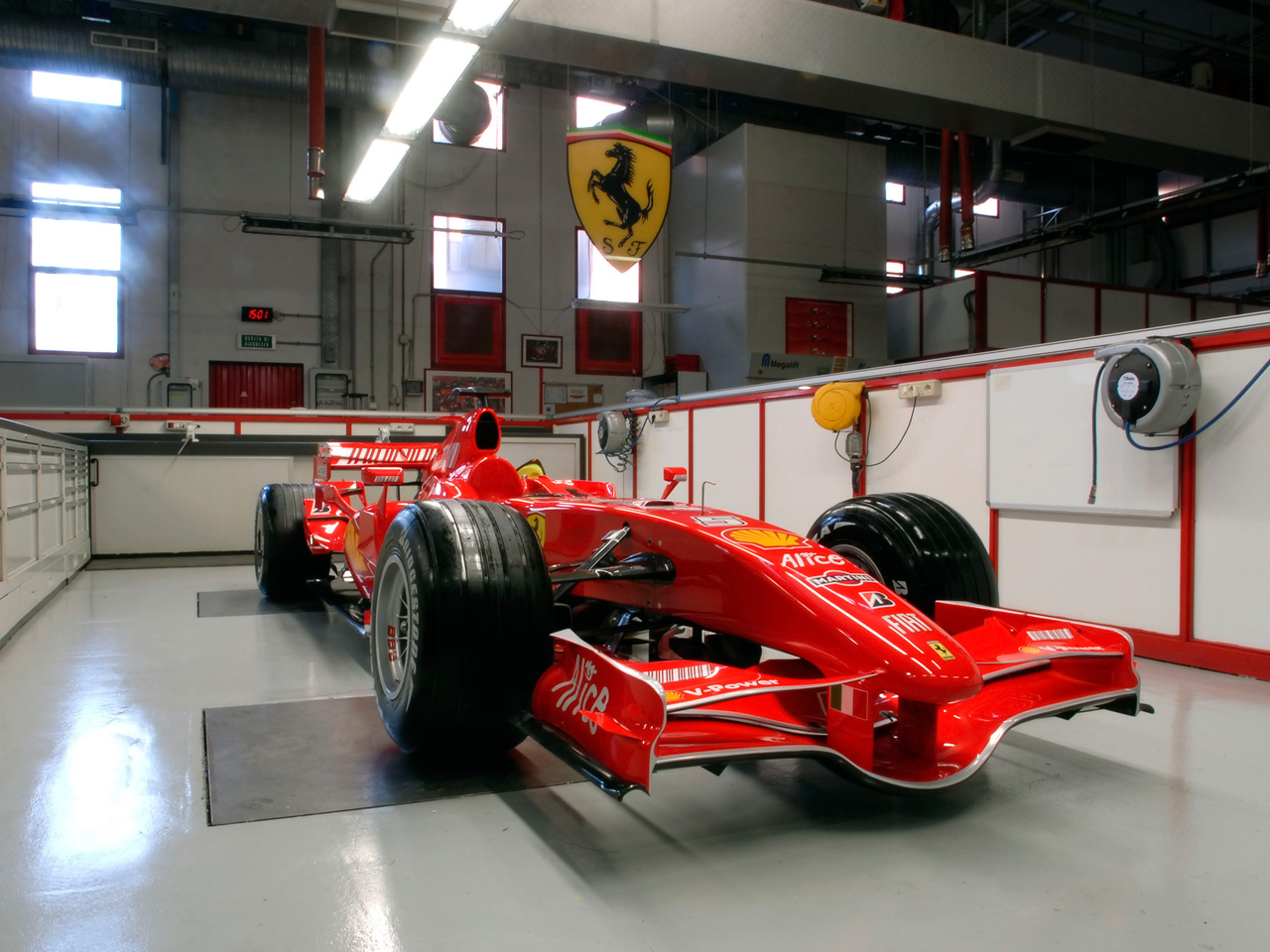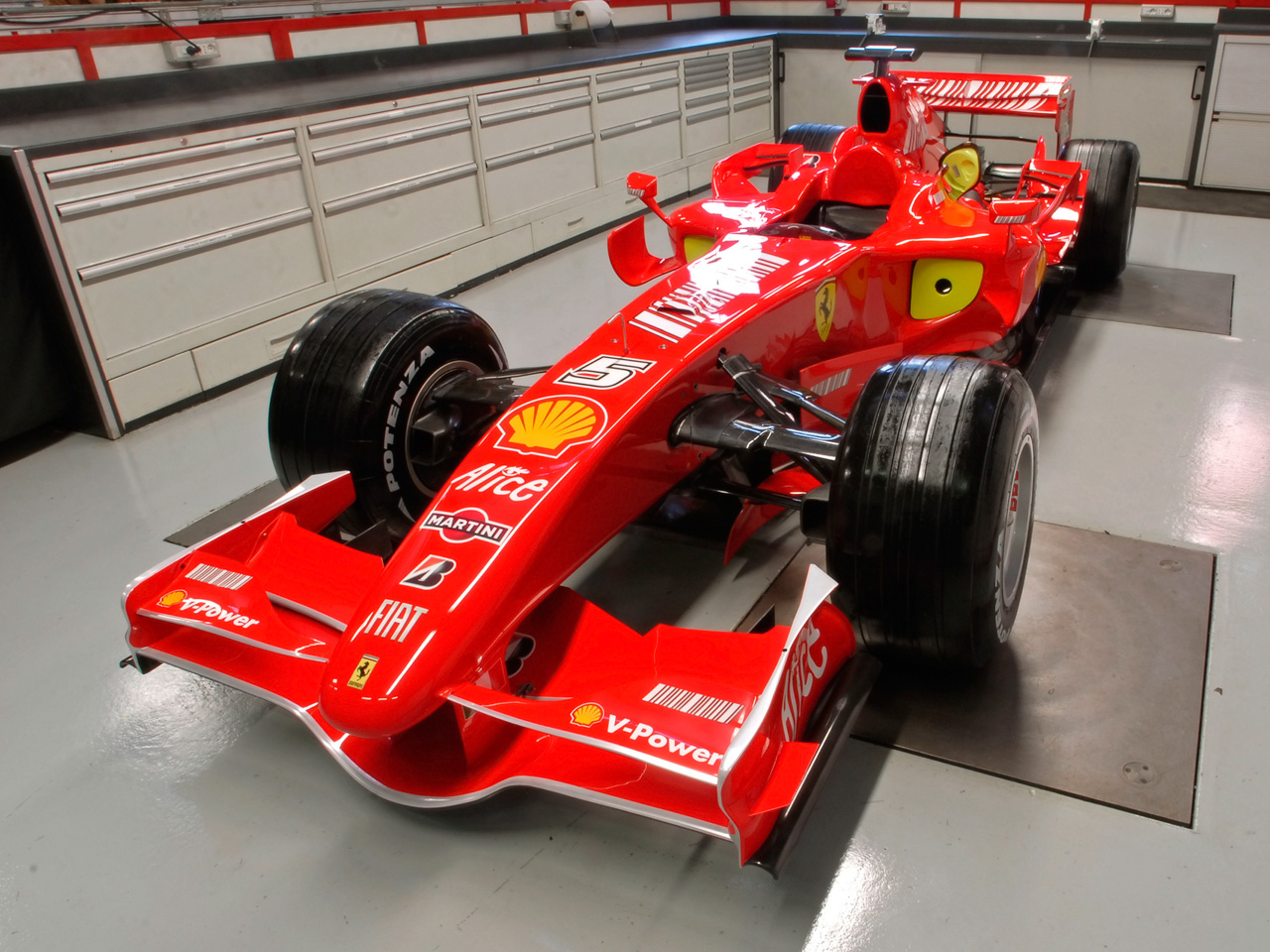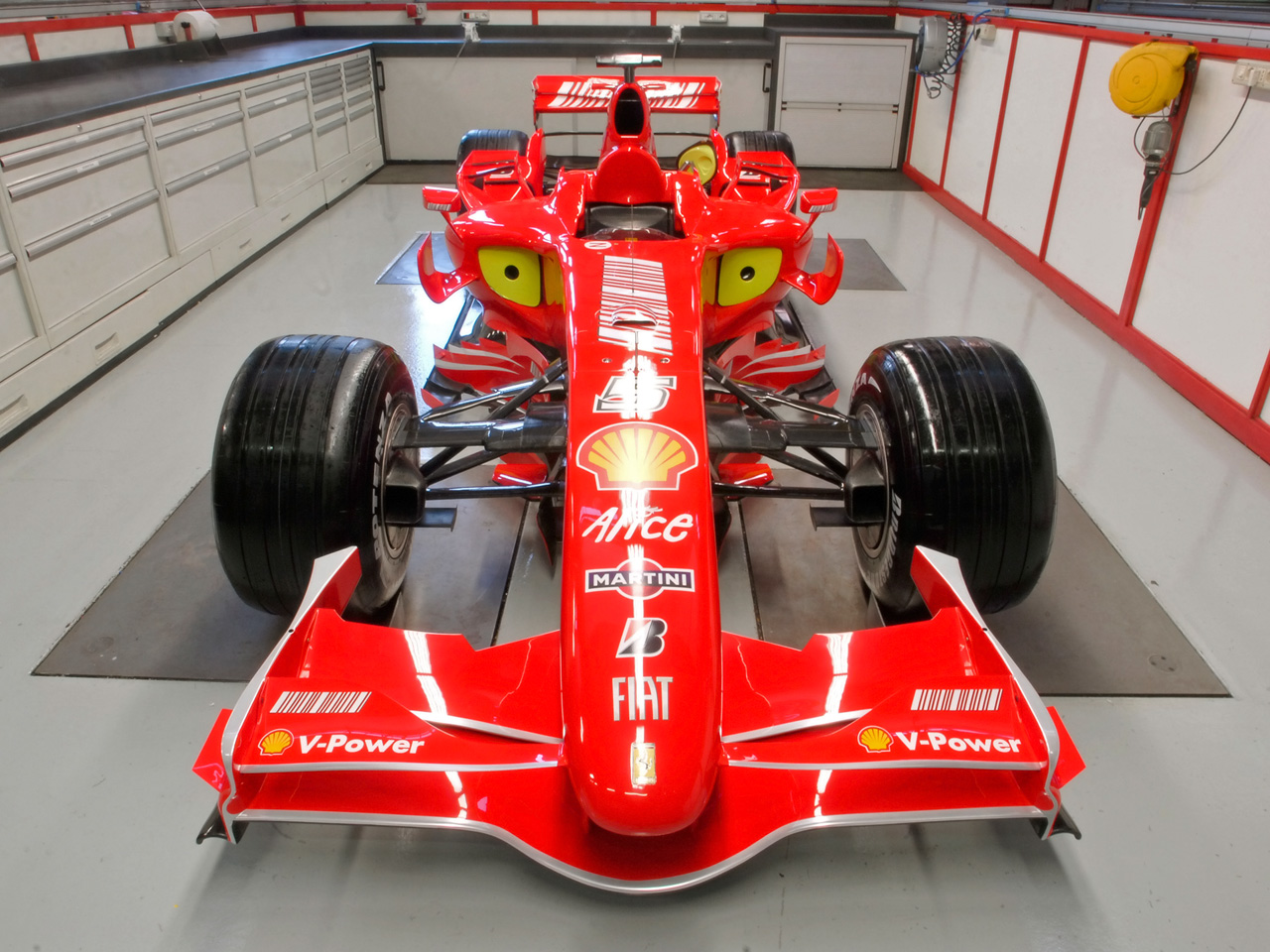2007 Ferrari F2007
|
Price |
-- |
Production |
-- | ||
|
Engine |
2.4 liter V8 |
Weight |
1323 lbs (with driver) | ||
|
Aspiration |
-- |
Torque |
-- | ||
|
HP |
-- |
HP/Weight |
-- | ||
|
HP/Liter |
-- |
1/4 mile |
-- | ||
|
0-62 mph |
-- |
Top Speed |
-- |
(from Ferrari Press Release) Maranello, 14th January 2007 - The F2007 is the fifty third single-seater built by Ferrari specifically to compete in the Formula 1 World Championship.
The project, known internally as the 658, represents the Scuderia's interpretation of the technical regulations that apply for 2007, with changes principally concerning safety, through the introduction of more stringent front and rear crash tests and the addition of a composite material structure to provide lateral protection to the sides of the driver. These modifications have led to a significant increase in the weight of the car, in the region of just under ten kilogrammes.
The F2007 chassis has
been significantly modified when compared to the 248 F1. The design
was revised to accommodate a new front suspension that represents a
major conceptual innovation, mainly in terms of aerodynamics. The
shape of the side-pods and their openings are also revised, based on
modifications to the cooling system, which also implies exits for
the radiators on the upper part of the bodywork, while the engine
air intake is also substantially different. The car has a longer
wheelbase than its predecessor. The rear of the car is much
narrower, taking advantage of the more sculpted shape of the gearbox
housing, which again this year is made from carbon fibre. The
gearbox itself, which is still mounted longitudinally, is fitted
with an innovative quick-shift system (seven plus reverse). The rear
suspension is similar to that on the 248 F1, but a significant
development programme is planned in this area, in order to get the
most out of the system, based on making progress in understanding
the behaviour of the 2007 tyres. The front and rear aerodynamic
configuration is also expected to change considerably before the
start of the World Championship. The position of the rear view
mirrors seen on the 2006 car remains unchanged and the same goes for
the exhaust system.
In accordance with the regulations that come into force this year,
the basic structure of the engine remains the same as the one
homologated at the end of last season. Therefore, the 056 engine
continues as a load bearing member and is again mounted
longitudinally. Based on what is permitted in the regulations, the
following modifications have been carried out to the engine signed
off with the FIA in October 2006:
the combustion chamber, the valves, the inlet and exhaust chambers, all aimed at optimising the torque curve, given the engine rev limit of 19,000 rpm;
the piston, the piston pin and the piston cooling jets to aim for the best possible reliability when running at the limit of 19,000 rpm;
the fluid systems (water and oil) and components to facilitate the integration of the 056 into the new car.
As usual, during the design and development phase of the complete car, the technical partners played an important role. A significant part was played by Shell in terms of fuel and lubricants, by the Fiat Research Centre in the use of simulation systems and by Brembo in developing the braking system. As is now traditional, a great deal of attention was paid to the performance and optimisation of the materials used, to the design stage and to quality control, striving to maximise the performance level and to ensure the highest possible standard of safety.
Aldo Costa, Head of the
Chassis Department of the Scuderia Ferrari Marlboro, and Gilles
Simon, Head of the Engine Department, started a series of meetings
with the press on the day of the preview of the new F2007.
Aldo Costa: "The methodology of the project and the
development of the car has been under the sign of continuity. Last
year we adopted an aggressive approach and this year we will work
with the same rhythm in development as in 2006. This was our aim and
we hit our target.
The aerodynamics have been completely remodelled; above all the
front suspension, the air inlets on the main body and the rear axle
are tighter and more tapered, to benefit also from the new
architecture of the gear box. We worked a lot on the chassis
considering the new crash tests, which are much more severe. With
satisfaction we can say that we have reached excellent results in
terms of safety. The suspension has been revised also under the
aspect of new tyres, while the gear box has a new quick shift
system, which will avert time loss during gear-changes. This system
lowers the time of gear change, works for all gears and in every
condition. We have also modified the disposition and the inclination
of the radiator. As far as the rear suspension is concerned, it is
continuing to evolve.
At the chassis department there are around 200 people working: an
exceptional and enthusiastic group. They work with determination and
respect; without a doubt producing great team work. Obviously I
can't name everybody, but I have to mention Nikolas Tombazis, our
Chief Designer; Tiziano Battistini, Head of the Technical
Department, John Iley, Head of Aerodynamics, supported by Marco De
Luca; Marco Fainello, Head of the Car Performance Division; Simone
Resta, Head of the R&D Department and last but not least Davide
Terletti, responsible for the crash tests.
Today's car is the one that will debut and has the same wings as the
one in 2006. The car, which will go to start at the first GP, will
have optimized wings, while this is just a provisional version. The
F2007 is however definitive in its structure.
In constructing and developing this race car the FIAT research
centre is of very high importance, as it gives us a huge amount of
support. We have worked a lot with the simulator they developed over
the last couple of years and we will continue on that road."
CHAssIS
Carbon-fibre and honeycomb composite structure
Ferrari longitudinal gearbox
Limited-slip differential
Semiautomatic sequential electronically
controlled gearbox - quick shift
Number of gears: 7 +Reverse
Ventilated carbon-fibre disc brakes
Independent suspension, push-rod activated
torsion springs front and rear
Length: 4545 mm
Width: 1796 mm
Height: 959 mm
Wheelbase: 3135 mm
Front track: 1470 mm
Rear track: 1405 mm
Weight with water, lubricant and driver: 600 kg
Wheels (front and rear): 13"
Gilles Simon: "As according to the rules the engine 056 has
remained the same. But we were able to adapt it to the rev limits of
19,000 rpm. We have revised the combustion chamber, the valves, the
crank shaft and the piston, to optimize the available output before
arriving at the rpm limit. Further we have worked on the integration
of the engine into the car: the water and oil inlets have been
revised, as has the positioning of some accessories, to adjust to
the very compact rear axle of the 658.
We have collaborated strongly with Shell, and we are continuing to
work on the fuel development. As far as the fuels are concerned we
have been continuously progressing. The lubricants have been helping
us for a long time in terms of reliability, while from March onwards
we also want to work on bettering the performance.
On the 1st March we will hand over a sealed engine, to which we
can't do anything else. We will then try to work on the accessories,
the air inlet and, as I just mentioned, the fuel and the
lubricants."
ENGINE
Type: 056
Number of cylinders: 8
Cylinder block in cast aluminium: V 90
Number of valves: 32
Pneumatic distribution
Total displacement: 2398 cm3
Piston bore: 98 mm
Weight: > 95 kg
Magneti Marelli digital electronic injection
Magneti Marelli static electronic ignition
Fuel: Shell V-Power ULG 62
Lubricant: Shell SL-0977



